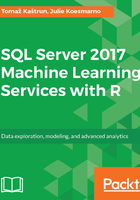
Language syntax
R language is very flexible and allows a user to change the S4 methods and S3 objects, generic objects, and all of the user-defined objects and variables. As the R Language is still not an object-orientated language, it is a question of debate if this is true or not (because currently, R understands only three object-orientated systems) because both S3 and S4 objects are OO orientated structures.
R Syntax might be easy to learn, but it is also easy to develop some doubts. The following are a couple of syntax disagreements in the R community:
- Several different R packages give users the same functionalities (data wrangling, data analysis, data predictions). As previously displayed, when comparing the performances of these packages for data-wrangling purposes with usage, users will see which package performs better or which package suit their needs better. Idiosyncratic syntax with confusing structures is also a part of the package and can be used in many different ways.
- There are multiple ways to do the same thing (declaring a variable, constructing a class, handling data, and predicting with the same algorithm).
- Missing conventions, namespaces, and package inter-dependencies.
- Somewhat challenging error messages with lacking documentation/help.
- Case sensitivity.
It is cumbersome to list all of the issues, but one can quickly get an idea of how the language evolved, but still is embraced by the community more and more; R as a language is perceived as the most popular to date.